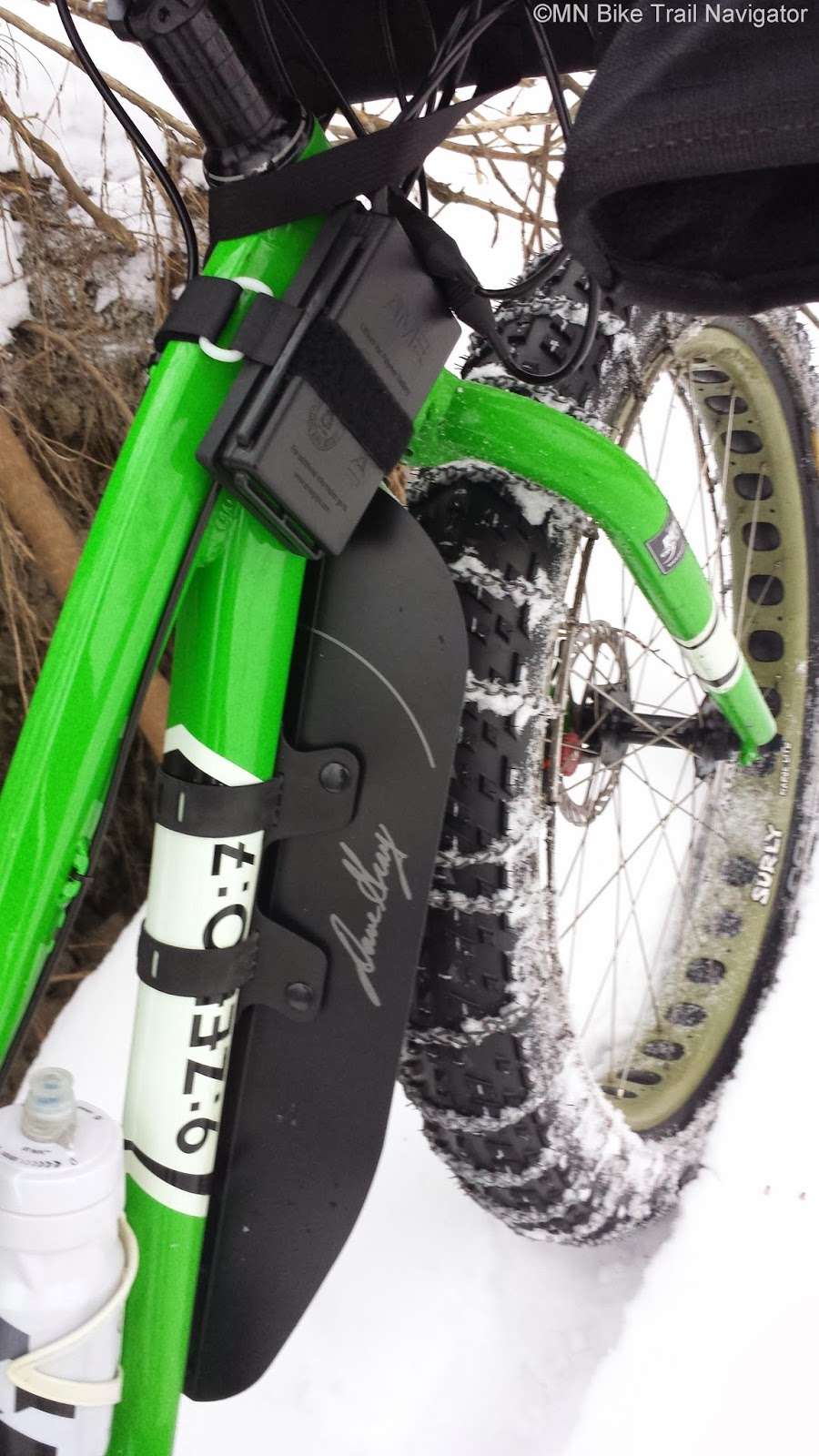With winter trail recreation strong, DNR urges caution
(Released February 14, 2014)
With winter trail recreation up this year, the Department of
Natural Resources advises people to be aware that some winter trails,
such as groomed ski trails, are not open to bicyclists.
“We have had a great snowmobile and cross-country ski season so far,” said Andrew Korsberg, state trail program coordinator for the DNR’s Parks and Trails Division. “Snowmobile registrations and ski pass sales are up from last year, and we have seen an increased interest in other types of winter sports, such as winter bicycling.”
The DNR grooms, plows and packs trails for many types of winter recreation and asks trail users to pay close attention to which are which. There are legal restrictions on trail use in some cases and safety considerations in others.
In addition to the usual questions about whether it’s OK to walk or snowshoe on groomed ski trails (it’s not), the DNR has been getting a variety of questions this year about where fat bikes are allowed. Fat bikes have wide, low-pressure tires designed for use on snow and sand. They are not allowed on groomed ski trails. They are also prohibited on the state’s 21,000 miles of grant-in-aid snowmobile trails, many of which are on private property, where landowners have given permission only for snowmobiling.
For winter cycling enthusiasts, there are an increasing number of places to ride fat bikes throughout the state. There are about 10 miles of groomed trails for fat bikes at Cuyuna Country State Recreation Area near Brainerd.
The DNR also allows fat bikes on two state trails in the Twin Cities. In the east metro, fat bikes can ride the 12-mile stretch of the Gateway State Trail from Cayuga Street to Jamaca Avenue. In the west metro, they can ride the 7-mile segment of the Luce Line State Trail, from Vicksburg Lane to Stubbs Bay Road.
Find more information about the fat-bike trails at Cuyuna Country State Recreation Area.
Find maps of the Gateway and Luce Line state trails online or contact the DNR Information Center at info.dnr@state.mn.us or call 651-296-6157, toll-free 888-646-6367 between 8 a.m. and 4:30 p.m. Monday through Friday.
“We have had a great snowmobile and cross-country ski season so far,” said Andrew Korsberg, state trail program coordinator for the DNR’s Parks and Trails Division. “Snowmobile registrations and ski pass sales are up from last year, and we have seen an increased interest in other types of winter sports, such as winter bicycling.”
The DNR grooms, plows and packs trails for many types of winter recreation and asks trail users to pay close attention to which are which. There are legal restrictions on trail use in some cases and safety considerations in others.
In addition to the usual questions about whether it’s OK to walk or snowshoe on groomed ski trails (it’s not), the DNR has been getting a variety of questions this year about where fat bikes are allowed. Fat bikes have wide, low-pressure tires designed for use on snow and sand. They are not allowed on groomed ski trails. They are also prohibited on the state’s 21,000 miles of grant-in-aid snowmobile trails, many of which are on private property, where landowners have given permission only for snowmobiling.
For winter cycling enthusiasts, there are an increasing number of places to ride fat bikes throughout the state. There are about 10 miles of groomed trails for fat bikes at Cuyuna Country State Recreation Area near Brainerd.
The DNR also allows fat bikes on two state trails in the Twin Cities. In the east metro, fat bikes can ride the 12-mile stretch of the Gateway State Trail from Cayuga Street to Jamaca Avenue. In the west metro, they can ride the 7-mile segment of the Luce Line State Trail, from Vicksburg Lane to Stubbs Bay Road.
Find more information about the fat-bike trails at Cuyuna Country State Recreation Area.
Find maps of the Gateway and Luce Line state trails online or contact the DNR Information Center at info.dnr@state.mn.us or call 651-296-6157, toll-free 888-646-6367 between 8 a.m. and 4:30 p.m. Monday through Friday.




























